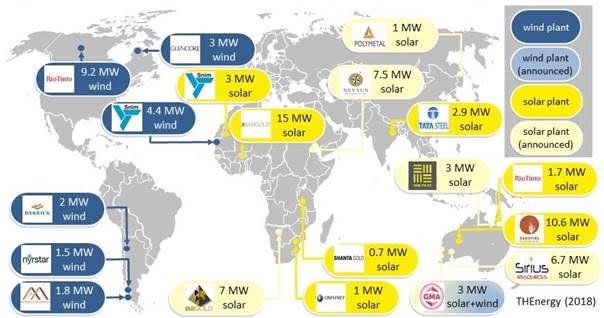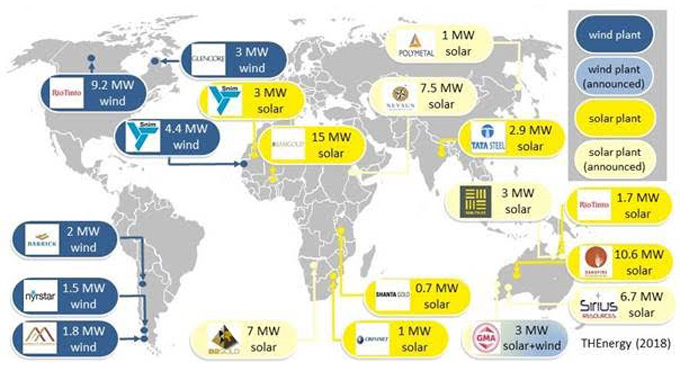A product innovation reduces costs and increases relocatability of PV plants.
All over the world, renewable energy projects have conquered the mining sector lately. The business case is particularly positive for off-grid mines that are powered by diesel or heavy fuel oil (HFO). In 12 countries, pilot projects have been built or officially announced – mainly during the last 2 years. Power purchase agreements (PPAs) have become more and more common. Independent power providers (IPPs) build and operate the renewable energy assets and sell the electricity to neighbouring mines.

Solar in particular has become so inexpensive that pay-off periods are significantly below the expected lifetime of the solar plants which is typically 25 years and longer. At B2Gold’s Otjikoto mine in Namibia, the solar project has a payback of just 4.3 years. The actual payback depends on many factors such as fuel price, transport costs, solar irradiation, accessibility of the mine, load profile of the mine, and technology. Typically, longer PPAs are required to make the project attractive for mining companies and IPPs. In Burkina Faso, IAMGOLD and Total Eren signed a 15-year PPA; in Eritrea, Aggreko and Nevsun agreed upon a ten-year PPA. Many mining companies still struggle to commit long-term. This might be due to deposit sizes, mining permits, or economic reasons. The benchmark is often the status-quo and diesel supply contracts are seldom signed for time-periods of more than 5 years.
In remote locations, typically there is no alternative off-taker. The renewable energy assets are specifically built for a particular mine. If a PPA is not prolonged, the renewable energy plant will be a stranded asset. Even if the mine operators have committed long-term, the economics of the mine must ensure that the solar energy is actually paid. For IPPs, this translates into a counterparty risk. To make shorter PPAs economically feasible either the costs have to be reduced or the solar assets might be reused in a different location.
A new mounting system technology addresses both factors: reduction of the costs of solar energy and relocatability of solar plants. If the client fails to pay, typically there are no other off-takers at these remote locations.

Optimized mounting systems allow for dissembling, relocating, and re-erecting the solar array in a different location. The earth anchor approach is one of the most advanced solutions because it also reduces installation costs and environmental impact. In the Osprey PowerPlatform technology, earth anchors secure the foundations of ground-mount solar arrays to the underlying terrain.
Earth anchors can be deployed in a wide variety of substrates as they work in virtually any type of soil, on any site—even under the most challenging of conditions, such as in desert hardpan, rocky soil, permafrost or on most landfills. The earth anchor, once positioned, relies on an upward radiating cone of soil which may weigh as much as 2000-3000lbs (1000-1500kg) of resistant force. The earth anchor approach has several advantages over traditional foundations. Less material use means lower direct costs and transportation costs. The Osprey PowerPlatform eliminates the need for large scale utility vehicles such as cement trucks and pile driving machines as it installs to the ground with basic tools that one man can carry, handle and operate. The simplicity of the solution results in shorter installation times and lower labor costs, and greatly reduces the amount of skilled labor needed.
For mining applications, these advantages translate into overall cost-savings for constructing the solar power plant. Lower costs for relocatability means that shorter power purchase agreements become economically viable. An interesting aspect is that earth anchors have been successfully used in mining applications for providing the foundation of fabric buildings.
For further information, please have a look at the corresponding report: https://www.th-energy.net/english/platform-renewable-energy-and-mining/reports-and-white-papers/

